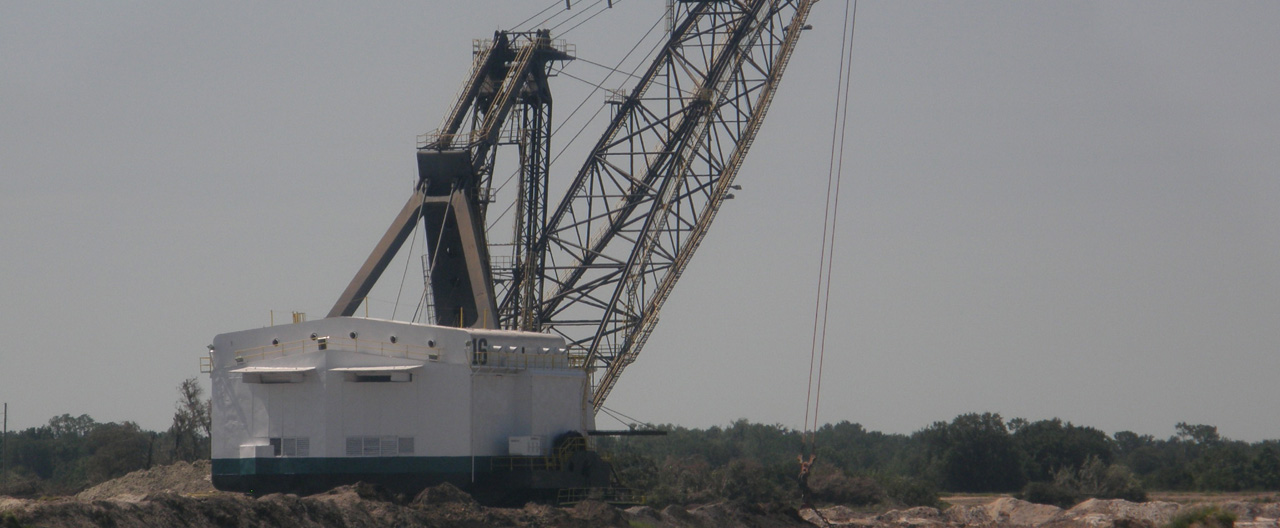Phosphate Mining Today
After a mine site is permitted and reclamation plans are in place, the land is prepared for mining. Endangered species are relocated and measures are taken to protect wetlands and other preservation areas. In addition, systems are put in place to offset any impact to water levels and flow in the surrounding areas. After these measures are taken, the land is cleared.
When the land is ready, the dragline goes to work. The dragline bucket holds from 45 to 65 cubic yards of material and is large enough to hold a truck or van. It scoops up the top 15 to 30 feet of earth known as overburden and dumps it in spoil piles to the side of the mine pit. The dragline then digs out what is known as the matrix, which consists of about equal parts phosphate rock, clay and sand.
Matrix is then dumped in a pit where high-pressure water guns create a slurry that can then be pumped to the beneficiation plant, which can be up to 10 miles away. At the beneficiation plant the phosphate is separated from the sand and clay.
After going through beneficiation, the clay slurry is pumped to a settling pond. The sand is sent back to the mine site to be used in reclamation and the phosphate is sent to the chemical processing plant where it is processed for use in fertilizer and other products. Phosphogypsum, a by-product of this process, is stored in large stacks near the chemical processing plant.
